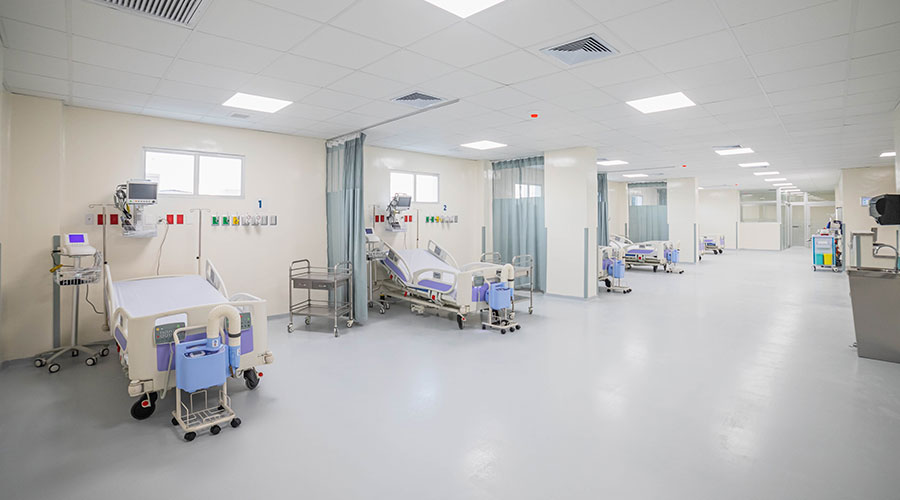Infection control is a major focus of the healthcare industry owing to the enormous financial and social burden worldwide. One in every 25 patients will acquire an infection while hospitalized ; in fact HAI (hospital acquired infection) is the most common hospital complication resulting in billions of excess healthcare costs.
In 2014, the infection control market was estimated at $13.1 billion, which includes chemical and physical equipment solutions. The disinfection and sterilization equipment market, a $3.1 billion segment, represents the highest growth rate. This is largely supported by an objective of the Affordable Care Act to promote quality improvement and encourage innovation in the field of HAI prevention.
Historically, hospitals were paid regardless of the reason for service, with no monetary pressure to improve quality. Today, public and private health plans are moving to change payment structures to reward better outcomes instead of mere service volume. This is driving innovation in HAI prevention technology — which includes hospital air disinfection.
Methods for delivering UV disinfection
Ultraviolet germicidal irradiation (UVGI) is one of the techniques that can be used to reduce airborne pathogens in healthcare environments. With this technique, light in the 250-280 nm wavelength range (also referred to as the UVC range) disrupt DNA of harmful microorganisms and render them unable to reproduce, thereby eliminating the spread of infection. UVGI is primarily delivered in three types of systems — portable, in-duct and upper room.
Portable UVGI units are used in patient, surgical and ICU rooms as well as other critical care settings. Mobile units use high power pulsed UV light for intense intermittent room cleansing between patient stays or procedures, while portable in-room air purifiers equipped with UV are used for continuous air treatment in high-risk areas. This allows facilities to bring disinfection to the patients and locations that need it most.
Stationary UVGI disinfection can take the form of either in-duct systems for airstream disinfection or upper-room installations to prevent infection transmission within a room. Unlike the portable units, both types of built-in systems are capable of treating large volumes of air circulation.
In-duct UVGI centralizes disinfection using mercury lamps to treat air as it circulates through the building. Guidelines in these systems define optimal lamp placement within an air handling unit (AHU) or duct to optimize disinfection. These units are practical for preventing infections that are primarily recirculated within buildings (e.g. sick building syndrome, bioterrorism).
Upper room UVGI units eliminate airborne pathogens within a room and are especially advantageous when the source of infection is localized. This solution is effective in preventing the spread of influenza, SARs, TB and other airborne illnesses. In fact, this method of disinfection has been found to reduce rates of infection by 80% in controlled mammalian laboratory experiments published by Ed Nardell, Associate Professor of Medicine, Harvard Medical School.
UVC LEDs: redefining UVGI systems
Light emitting diodes (LEDs) that emit UVC light are an emerging alternate light source for all three types of UVGI systems. Traditional UVGI systems use low-pressure mercury lamps, which emit at 253.7 nm as a line source. Despite this particular wavelength not being ideal from a germicidal efficiency standpoint, the lamps have become industry standard since they have been one of the only options until now.
With the introduction of UVC LEDs, emission of the light can be tailored to the action spectrum of pathogens—generally reported between 265-267nm. There can be some variation in wavelength susceptibility between bacterial and viral strains, usually depending on the cell wall characteristics. The wavelength specificity of LEDs makes them beneficial in systems created for a specific target — such as SARS or TB.
In traditional mercury lamp-based upper room UVGI systems, the lamps are left on continuously in occupied rooms and congregate settings. Prolonged exposure to UVC wavelengths can cause eye and skin damage, so the use of these systems requires the integration of safety measures to protect room occupants. These include directing almost all of the UV light above eye-level via reflectance baffles integrated into the lighting fixtures. Such baffles have an unintended consequence of reducing lamp efficiency.
New solutions using UVC LEDs provide increased design flexibility and safety for room occupants while being an inherently unidirectional and efficient light source. This means that manufacturers can control the emission path away from room occupants without requiring additional baffles to redirect light allowing for continuous disinfection without causing harm.
The compact nature of UVC LEDs also allows for more uniform disinfection in a room — regardless of shape or size. Traditional fixtures are constrained in design to the lamp’s long tube housing. Such fixtures are necessarily placed in corners or along walls of a room for optimum UV radiant distribution. However hot spots and cold spots are typical, especially in irregularly shaped rooms. Conversely, the compact nature of UVC LEDs allow them to be placed in a grid-like pattern to accommodate room shape for maximum uniformity, providing an overall more efficient germicidal system.
In addition to overall effectiveness, systems integrating UVC LEDs provide other advantages around environmental friendliness, less complex electronic systems, and compact design. These advantages offer tremendous design freedom and flexibility for both portable and in-duct systems. As LEDs become the light source of choice, these systems will be reimagined and redefined to address the growing concern around HAI and enable the safe proliferation of UVGI for improved outcomes in healthcare facilities and congregate settings.
Therese Jordan is the senior vice president of business development, Crystal IS.
i http://www.health.gov/hai/prevent_hai.asp
ii 2011, American Society of Heating, Refrigerating and Air-Conditioning Engineers, Inc. . ASHRAE Handbook – HVAC Applications
iii ASHRAE, 2012. 2012 ASHRAE Handbook—HVAC Systems and Equipment. Chapter 17: Ultraviolet Lamp, Systems, 17.6

 Alleged Ransomware Administrator Extradited from South Korea
Alleged Ransomware Administrator Extradited from South Korea Design Plans Unveiled for New Intermountain St. Vincent Regional Hospital
Design Plans Unveiled for New Intermountain St. Vincent Regional Hospital Ground Broken on New Pediatric Health Campus in Dallas
Ground Broken on New Pediatric Health Campus in Dallas Pre-Construction Strategies for Successful Facilities Projects
Pre-Construction Strategies for Successful Facilities Projects Geisinger Finds Success with Violence Prevention Efforts
Geisinger Finds Success with Violence Prevention Efforts